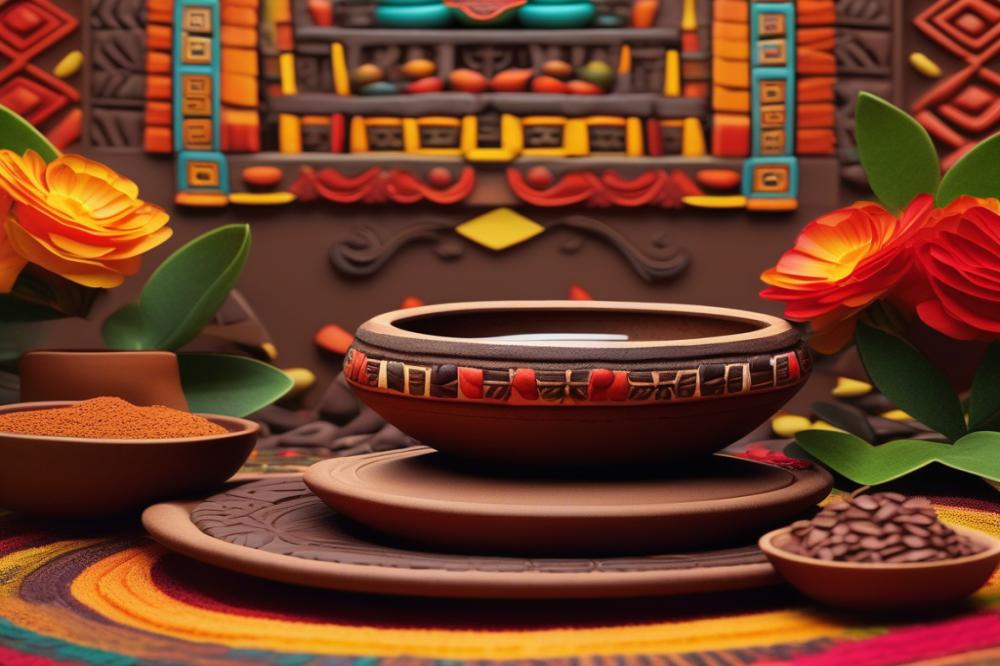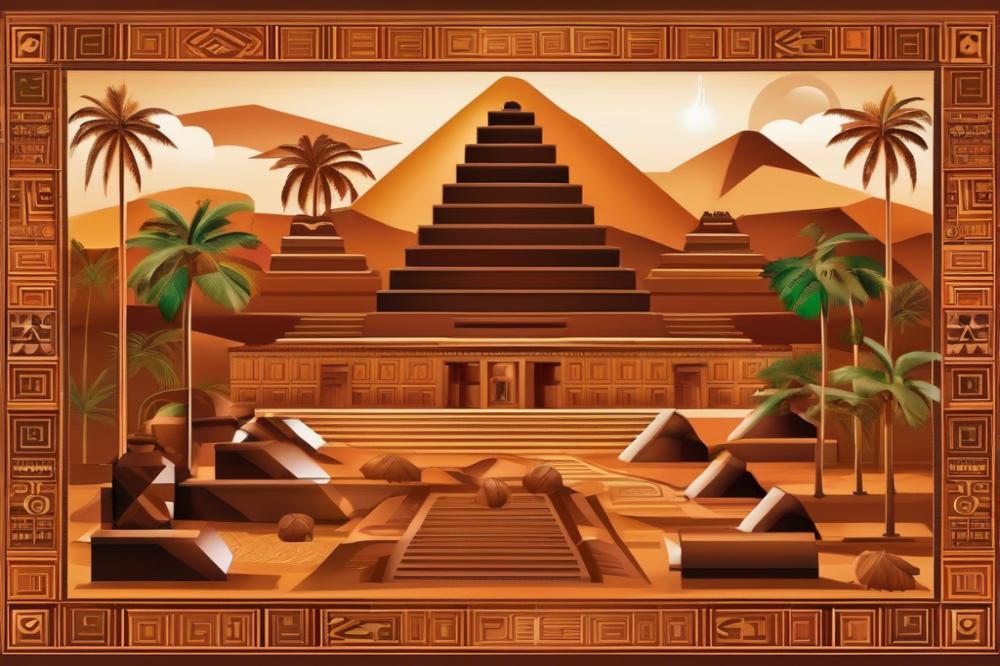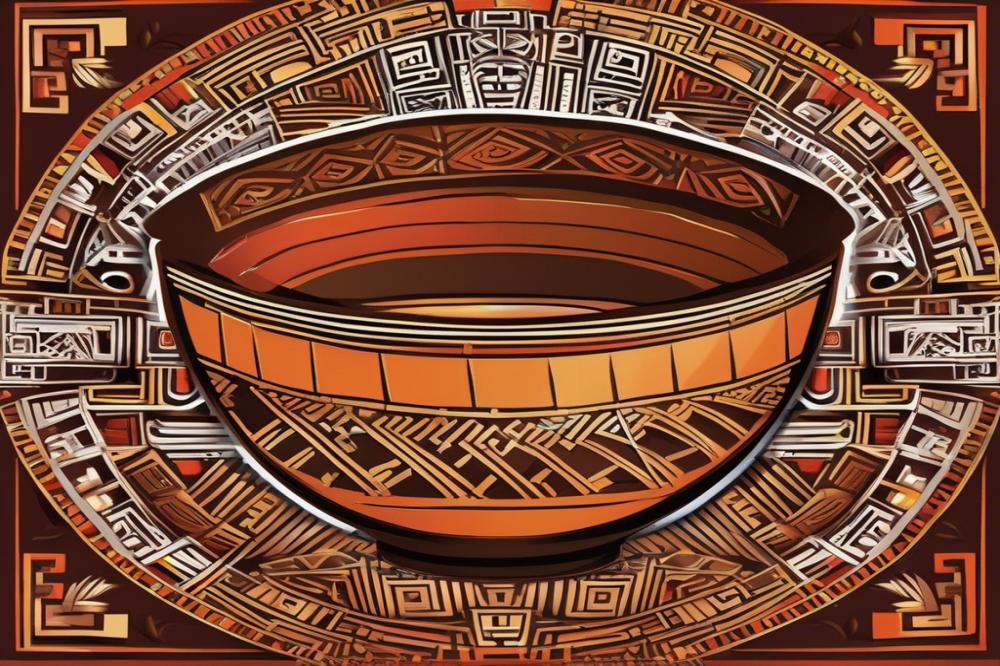The Role of chocolate in Aztec Religious ceremonies
Cacao has deep roots in Mesoamerican history. Many people view it today as a delightful treat, but its origins are far more profound. It played a crucial part in the lives of ancient civilizations, especially the Aztecs. This civilization thrived in central Mexico and is known for its advanced culture and spirituality. The people of this society had a close and unique relationship with cacao, often elevating it to a divine status.
Cacao beans were not just a food item; they symbolized wealth and social status. Common folks could not enjoy them as easily as the elite. In fact, the upper class used cacao as a form of currency. It was often a part of marriages and significant trades. This shows us just how much importance the Aztecs placed on this valuable resource.
Rituals and ceremonies were central to Aztec religion, and cacao played a vital role in these events. The drink made from cacao, known as xocoatl, was often consumed during spiritual offerings to the gods. Such practices highlighted the connection between food and spiritual expression. Additionally, cacao was linked to fertility and agricultural abundance, making it essential for their belief system.
This exploration into the cacao’s role reveals a tradition rich in meaning. Whether served in rituals or as an offering to deities, cacao was woven into the fabric of Aztec life. The legacy of this sacred ingredient continues to impact our world today.
The Significance of Cacao in Aztec Culture
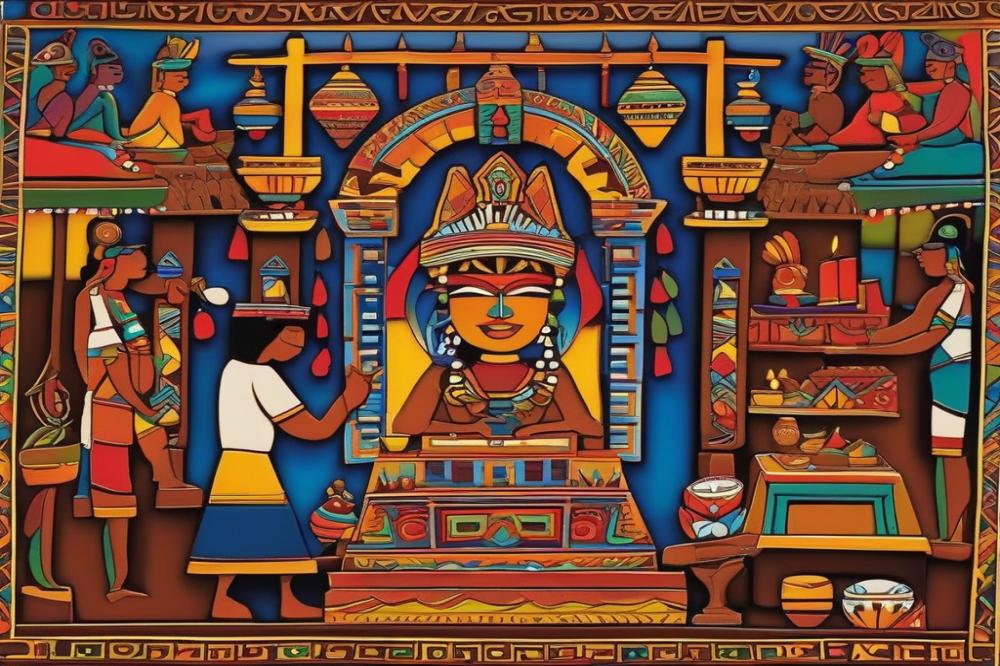
Cacao held great importance in Mesoamerican civilization, especially for the Aztecs. Revered as a sacred plant, it was more than just a food source; it was a symbol of life and vitality. The gods were honored with offerings of cacao during many ceremonies. These rituals emphasized the connection between the divine and the earthly, showcasing the reverence that communities held for cacao.
A fascinating process transforms cacao into the delicious drink known as xocoatl. First, the beans are harvested, then fermented and dried. Once complete, they are roasted and ground into a fine paste. This paste is later mixed with water, spices, and sometimes honey to create a frothy beverage. The transformation of cacao into xocoatl was not just a culinary achievement but a marker of culture and tradition.
Social status played a vital role in cacao consumption. Elites consumed xocoatl frequently, making it a luxury item. Commoners had limited access, which made this drink a clear indicator of wealth. This division highlighted the hierarchy within Aztec society. In gatherings, the wealthy proudly showcased their cacao to demonstrate their influence and power.
Cacao was also deeply integrated into daily life and economy. Beyond serving as a drink, it was used as currency. Traders exchanged cacao beans for goods and services. Families drank it during festivals and special occasions, linking it to spirituality and community bonding. Cacao was not just a staple; it was a vital part of social rituals and interactions.
chocolate in Aztec Religious Ceremonies
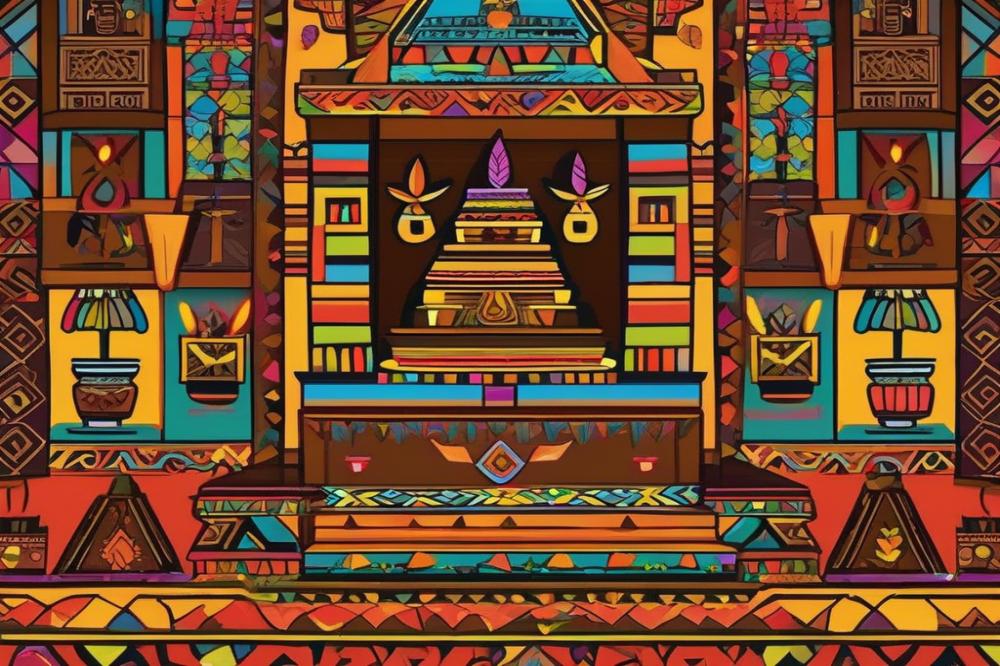
In Mesoamerica, chocolate played a significant role in religious ceremonies. Various rites honored the gods, and these events often included xocoatl, the drink made from cacao. People believed that this beverage connected them to the divine. As a result, rituals incorporated xocoatl to symbolize life and fertility.
During ceremonies, priests would prepare special cacao drinks. They would pour the frothed liquid into ornate vessels. This practice highlighted the social status of those involved. Only the elite could truly appreciate the importance embedded in these offerings, which were reserved for sacred moments.
The use of cacao also extended to offerings presented to deities. Participants would bring dishes filled with cacao beans, believing that these gifts could please their gods. In many cases, the act of giving was seen as a way to earn favor and receive blessings.
Such traditions were deeply embedded in the spirituality of the Aztec people. Each ritual was a blend of community and reverence. The relationship between humans and gods was essential. Chocolate became a conduit for expressing devotion and securing a bountiful harvest.
Ultimately, the ceremonies not only honored the gods but also strengthened community bonds. Each sip of xocoatl resonated with history and belief. This unique drink bridged social gaps and fostered unity among participants during sacred gatherings.
Rituals and Traditions Surrounding Chocolate
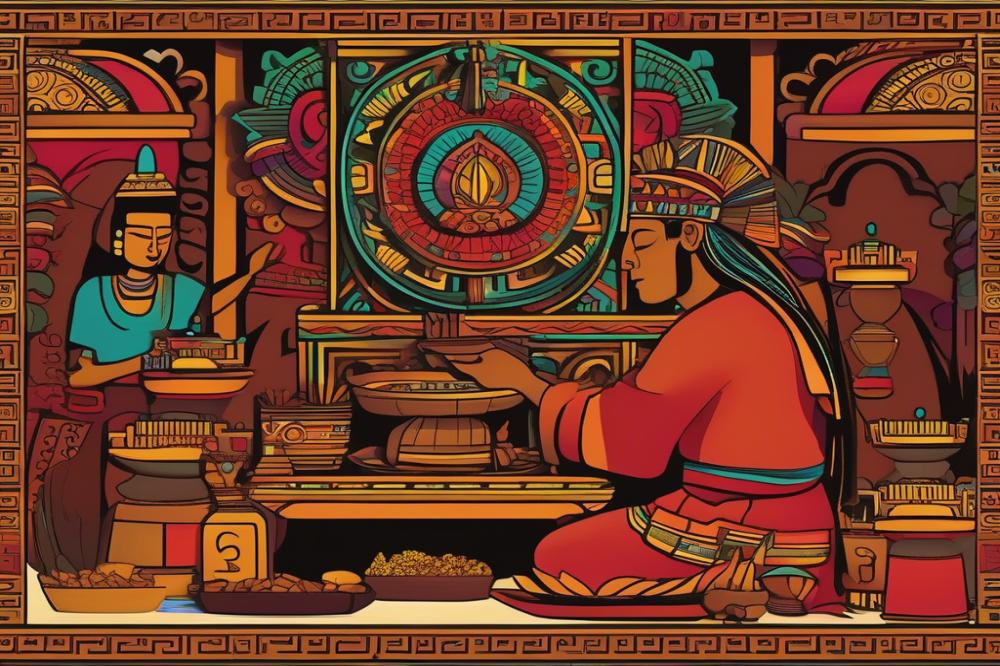
Cacao held a special place in Aztec culture. It went beyond being a mere food; it was a vital part of various ceremonies. During significant events, it was often used as an offering to the gods. These rituals demonstrated reverence and gratitude for divine favor.
Specific ceremonies showcased the importance of xocoatl, a frothy drink made from cacao. In weddings, for instance, it symbolized unity and prosperity. Celebrants shared this drink to bless their union. Festivals also featured this sacred beverage. Participants consumed it for joy, often accompanied by music and dance.
The Mesoamerican inhabitants viewed cacao as a bridge between the earthly and the spiritual. In rites of passage, the drink played a significant role. Young individuals drank it to mark their transition into adulthood. This act connected them with ancestral spirits and their cultural heritage.
Social status influenced access to these rituals. Nobles consumed xocoatl enriched with spices, showcasing their wealth. For the common people, simpler versions of the drink sufficed. Nevertheless, everyone recognized its sacred nature. Although preparations varied, the significance remained unchanged.
Spirituality permeated these practices. Cacao was seen as a gift from the gods. This perception elevated its status and solidified its role in ceremonies. Rituals often included prayers and chants dedicated to deities. Through them, people sought protection, blessings, and abundance.
Chocolate as an Offering to the Gods
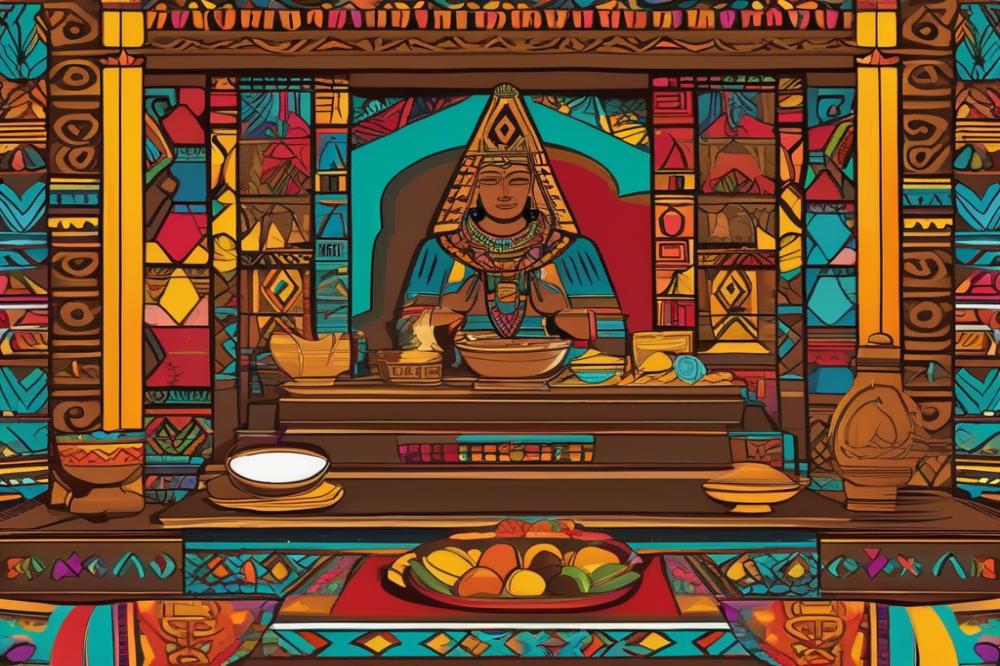
The Aztec civilization held a deep reverence for cacao. To them, it was not just a food item but a sacred product. This value was rooted in their view of spirituality and the divine. The relationship between the gods and cacao was significant. They believed that offering cacao could bring favor from the deities.
Different gods had unique connections with cacao. Quetzalcoatl, the feathered serpent, was one of the most prominent. He was often associated with knowledge and creation. Another important deity was Xochiquetzal, the goddess of beauty, love, and fertility. Cacao was honored in rituals dedicated to her. These gods symbolized various aspects of life and nature, making their connection to cacao vital in Mesoamerican culture.
During ceremonies, cacao played a key role in offerings. Priests would prepare a drink known as xocoatl for rituals. This drink, often spiced and sometimes bitter, represented gratitude. Offerings frequently included more than just cacao. Flowers, fruits, and precious items were part of the rituals, enhancing their significance. Prayers accompanied these offerings, seeking blessings and protection. The Aztecs believed that such acts would strengthen their connection to the divine.
Social status also influenced how cacao was perceived in ceremonies. Nobles and elite members of society frequently engaged in these spiritual practices. Their offerings were grander, reflecting their wealth and influence. Common people, though, also participated in ceremonies, offering simpler forms of cacao. This engagement revealed the widespread importance of cacao in Aztec spiritual life.
The tradition of using cacao as an offering came with deep cultural meaning. Each ritual was a way to honor the gods, maintain balance, and seek blessings. Many details were significant, from the type of cacao used to the manner of presenting it. This respect showed the powerful role cacao played in expressing spirituality among the Aztecs.
The Legacy of Chocolate in Aztec Culture
The traditions surrounding cacao have made a lasting impact on modern society. In ancient Mesoamerica, this substance wasn’t just a treat; it was a sacred element in ceremonies. The Aztecs often used xocoatl, a frothy drink made from ground cacao beans, during important religious rituals. They believed this beverage connected them to their gods. Over time, these practices have influenced how we view chocolate today.
Many contemporary Mesoamerican cultures still preserve the rituals associated with cacao. These ancient customs often include offerings during ceremonies aimed at honoring deities and seeking favor. Participants in these traditions demonstrate deep respect and spirituality through their actions. By involving cacao in their rituals, they continue to honor the past while fostering community bonds.
As time has passed, chocolate’s journey has taken a remarkable turn. From sacred offerings to popular snacks, its evolution reflects changes in society’s values. Once reserved for those of high social status, this snack has become a part of daily life for many. The rich history behind this food enriches our understanding of its place in culinary traditions.
Even today, some people seek authentic experiences that connect them to ancient practices. Many desire to taste the original flavors of xocoatl as part of their culinary exploration. This journey through time showcases the resilience of Aztec culture. Traditions and beliefs surrounding cacao continue to shape how we enjoy and perceive this beloved treat.
Final Thoughts on the Importance of Cacao in Aztec Ceremonies
The integral role of chocolate in Aztec religious ceremonies cannot be overstated. It was far more than a delightful treat; it served as a vital link between the physical and spiritual realms. Throughout various rituals, the substance was used to honor gods and ancestors. Offerings weren’t merely symbolic; they connected the people to their beliefs and traditions in a very real way.
Cultural significance filled every aspect of using cacao in these ceremonies. From birth to death, it marked important life events. It provided a form of communion, allowing participants to partake in something sacred together. Thus, the beverage represented both wealth and spirituality, enriching the lives of those who experienced it.
Moreover, the legacy of cacao has transcended Mesoamerica. It has woven its way into many cultures, creating a lasting impact on how people view this once-rare ingredient. Even today, it evokes feelings of joy and connection. We see its enduring presence in modern celebrations, where it continues to symbolize love, comfort, and connection. The historical roots remind us of its powerful journey from ancient rituals to contemporary life, showcasing its timeless relevance.

